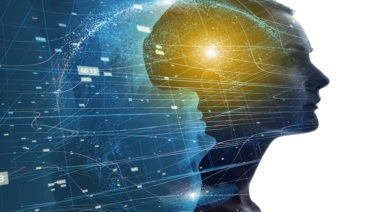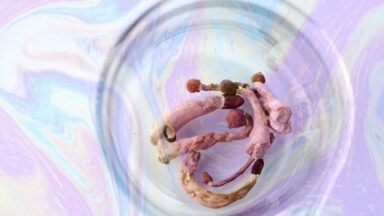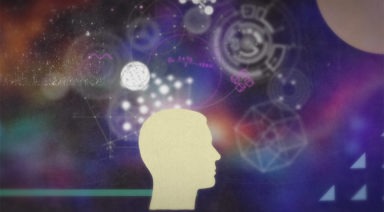Plant Consciousness; Do Plants Sense, Feel, and Communicate?

Just like the love we receive from our mothers and grandmothers, nature is a life-giving, lovable, and powerful healer. Is this interconnectedness and interdependence born from nature’s pre-engineered biology, or is there a type of plant consciousness? Are they sentient beings, with the ability to sense, feel, fathom, and communicate? The answer to this is more remarkable than you might imagine.
When we wander in the forest, we might be conscious of the abundant life around us. If we allow ourselves the opportunity, we might understand that when we walk among flowers and trees, our bodies, minds, and hearts are healed in some way. As we absorb the luscious beauty around us, somehow, with limited effort, we feel cleansed from head to toe. This is not just a feeling, it’s often a reality.
We see a robust and majestic pine tree, drenched in sunlight and surrounded by wet earth. Thirty feet away we see its equally vital twin in the shade, surrounded by dry soil. Scientists say that it’s not only that the twin tree has roots that will reach to the nearby wet ground for sustenance, it’s also that these two trees share nutrients and messages via an intricate underground network. This is why the tree in the shadows is as healthy as her sunlit neighbor.
“You know what a lima bean does when it’s attacked by spider mites? It releases a volatile chemical that goes out into the world and summons another species of mite that comes in and attacks the spider mite, defending the lima bean. While we have consciousness, toolmaking, and language, plants have biochemistry.” — Michael Pollan
Can Plants Feel Pain?
As far back as the 1980s, researchers like Frank Kühnemann at Germany’s Institute for Applied Physics at Bonn University, have worked to understand how plants communicate. It’s not airy-fairy curiosity that gave birth to this pursuit; it originally began to help farmers understand why their crops soured when stored in local silos or during intercontinental transport to foreign nurseries.
Originally developed by scientists at the Catholic University of Nijmegen in the Netherlands and later improved-upon by The Institute for Applied Physics, a unique acoustic device was built to evaluate plants’ stress levels by measuring the energies of ethylene gas molecules provoked with lasers.
During harvesting, cultivation, drought, and after exposure to salt, poor ozone quality and cold air, plants emit ethylene gas. While they emit the gas when being eaten, attacked, or cut, they also emit the same levels of ethylene when their fruit is ripe.
That amazing smell after you cut your lawn?
The result of the grass reacting to being cut.
The German acoustic device determines the stress level of the plant by converting the levels of ethylene gas into corresponding sound waves. This helps us understand the levels of “pain” and stress the plants are experiencing.
Acoustics-based research surrounding plants has given farming a boost. More specifically, it’s helped farmers understand that storing apples with other crops can damage the other crops. This research also points to the stress that plants experience during travel, given certain types of plant-based traveling companions.
The results of these experiments and many since have shown us plants can respond and react to their experiences. They can also remember and learn from their experiences and can make adjustments based on what they’ve learned. Plants emit gases and chemicals into the soil around them and send messages through their roots to nearby plants. Suffice it to say that the world of plants is mind-blowing.
“Never go to a doctor whose office plants have died.” — Erma Bombeck
Do Plants Have Feelings?
When hearing that plants react and feel “pain,” your heart might fill with compassion and empathy. You might want to start a new organization aimed at protecting plants from cruelty! Certainly a noble pursuit.
While there are similarities among humans, animals, and plants, it’s important to consider that a plant’s purpose and systems are mostly dissimilar to those of humans and animals. When a human feels pain, they cry. When plants are cut or stored alongside rotting apples, they emit ethylene gas. This doesn’t mean the plant doesn’t feel pain, it means we have a lot to learn about the nature of plants, especially as it relates to the notion of suffering.
It’s probable that plants don’t suffer in the same way humans and animals suffer and plants don’t feel the same way humans and animals feel. It’s certainly a lovely notion that at least one part of the Earth’s ecosystem might be saved from a measure of suffering.
While humans, animals, and plants all have unique systems for connecting and each has a distinct cry for help, plants don’t have the same cortex and therefore, do not think and feel in the same way humans and animals do.
It’s within thinking that emotions arise. And it’s during the expression of emotions that we understand when a creature is in pain. That said, plants clearly have their own thinking and feeling systems, many of which we have yet to understand.
It begs the question, what is a vegan to do? If my cucumber can feel my bite, should I become a Breatharian? For now, vegans should probably continue to eat vegetables, but feel free to be more loving and grateful when you bite into them!
Can Plants Communicate?
Although it started with the exploration of what seemed to be an insane premise — plants, just like humans and animals, can be shy or aggressive, connected or reclusive, and givers, receivers, or both. Upon certain conditions, plants will also warn their neighbors about impending attacks, problems, and the abundance and depletion of nutrients within the plant’s network.
Science seems to agree. According to Velemir Ninkovic, an ecologist at the Swedish University of Agricultural Sciences, “Plants … use signals to avoid competing situations and to prepare for future competition.”
By all accounts, it appears that plants are resourceful, proactive, communal and most certainly communicative.
“God sleeps in the minerals, awakens in plants, walks in animals, and thinks in man.” — Arthur Young

Are Plants Sentient?
According to Kenneth Worth, Ph.D., “Plants produce serotonin, GABA, and melatonin, which act as hormones and neurotransmitters in animal brains, though it’s not yet known what they do in plants. Intriguingly, drugs such as Prozac, Ritalin, and amphetamines can disrupt these “neurotransmitters” in plants.”
Putting all the pieces together, here’s what plants can do:
- Grow with proper nutrition
- Send messages and friend requests
- Sense the need for nutrients in other plants
- Share nutrients with other plants, even as far as 30 meters away
- Send out electric distress signals
- Sense light
- Encourage neighbors to grow in ways that will help save them
- Communicate using gases and chemical secretions in the soil
- Emit measurable sounds
- Send out signals to denote proximity to other plants
- React, Remember & Learn
- Produce Serotonin, GABA & Melatonin, which act like hormones in human beings
Related to the above, if we can give plants even the slightest benefit of the doubt, it must be probable that plants are sentient.
What Do You Feel Around Plants?
While the scientific and hippie ideologies surrounding plants might not always be aligned, what’s most important is what we each feel and sense around plants. Do you talk to your plants? Do you touch them with love? Whether you’re an academic researcher, holistic healer, or magical wizard living in another realm, plants give us oxygen, life, colors, and vibrations, all of which provide measurable benefits.
Plant Research in India and China
In 1962, Dr. T.C. Singh, the head of Botany at an Indian University, concluded that plants exposed to music experienced accelerated growth. He also found that the violin provided the most value in this area. Other scientists over time have concluded that classical music has a profound effect on plants’ health. Dr. Singh also found that barefoot, traditional Indian dancing in the same room as the plants caused them to flower two weeks earlier than previously recorded.
Physicist and Indian plant physiologist Sir Jagadis Chandra Bose, concluded after decades of researching the effects of environments on plants that, like humans, plants are sensitive to noise and nurturance. He also concluded that plants feel pain and understand affection.
In China’s Fujian Province, farmers claim their crop yields increased and grain size significantly improved when using sound systems to play Buddhist chants in and around their fields.
It seems undeniable that plants are sensitive in similar ways to humans and animals. Even with gaps in scientific research, there appears to be consensus around the notion that plants sense, feel, fathom, and communicate.
It’s humbling and exciting to learn about the expansive nature and abilities of plants. It’s also surprising and illuminating to learn about the parallels between plants and human/animal behaviors.
Enjoy and connect with your plants, receive their rich abundance when wandering in the forest, and share your love with all living beings in your life.
What Are Indigo Children and How to Identify Them?

Indigo children are special beings with a unique and powerful spiritual mission. They are attributed with deep intuition and psychic abilities that make them stand out. In this article, we explore in detail what indigo children are, where the concept comes from, and how to recognize them.
Table of Contents
- What Are Indigo Children?
- History and Origin of the Concept
- 10 Common Traits of Indigo Children
- Types of Indigo Children
- Challenges and Common Issues of Indigo Children
- How to Identify an Indigo Child
- Differences Between Indigo, Crystal, Rainbow, and Diamond Children
What Are Indigo Children?
Indigo children are considered a new generation of human beings with a greater spiritual connection and a clear mission to transform society. This concept originated from the observation of certain children born from the 1970s onward, who showed a unique combination of abilities and characteristics that clearly set them apart from their peers. They are called “indigo” because of the predominance of indigo blue in their aura.
These children often stand out for their high emotional sensitivity, creativity, and strong intuitive abilities. They are believed to be old souls who have the mission to challenge established norms and promote positive change in the world. Their purpose is to pave the way for a more just, peaceful, and harmonious society by questioning and transforming outdated societal structures.
The mission of indigo children comes with significant challenges. Their deep sensitivity and perception allow them to see and feel the injustices and imbalances of the world very intensely, which can lead them to experience frustration and disappointment when they encounter resistance to change. However, their determination and sense of purpose drive them to move forward and fulfill their mission.
History and Origin of the Concept
The term “indigo child” was popularized by parapsychologist and author Nancy Ann Tappe in the 1970s. Tappe observed that many children born from that period had a predominantly indigo-blue aura, which led her to develop the theory that these children had special spiritual characteristics and missions. According to Tappe, these children possessed a higher consciousness and were destined to change the course of humanity.
Over time, the idea of indigo children expanded and was adopted by various spiritual and metaphysical schools of thought. In the 1990s, the books by Lee Carroll and Jan Tober contributed significantly to the spread of this concept. The authors described a series of traits and behaviors that identified these children and suggested that their purpose was to lead a global shift toward greater spiritual and social awareness.
Today, the concept of indigo children remains an important part of many spiritual communities and has expanded to include the later generations of crystal and rainbow children, each with their own characteristics and specific missions in the spiritual evolution of humanity.
10 Common Traits of Indigo Children
Indigo children exhibit distinctive characteristics that reflect their spiritual mission and purpose in the world. Below are ten traits that characterize these unique beings:
- Spiritually awakened: From an early age, they feel a connection to something greater. They sense they have a special mission.
- Sense of purpose: They are confident that they are here for an important reason. This conviction drives them to act with confidence.
- High expectations: They set high standards for themselves and others. This can make interpersonal relationships challenging.
- Strong intuition: They trust their perception and can often foresee events. Their intuition guides them in decision-making.
- Question authority: They are rebellious and skeptical of established norms. Their inclination to question authority and established rules challenges the structures they consider unjust.
- Desire to change the world: They seek to transform outdated structures. They are drawn to topics related to social justice, ecology, and human rights, promoting new ways of thinking and living.
- Creativity: They use their artistic talent to express their visions. Their art inspires and raises awareness in others.
- Agents of change: They identify social problems and seek innovative solutions. They work tirelessly to improve society.
- Sense of not belonging: They often feel different from their peers. They may experience a sense of isolation.
- Intense passion: Their energy and fervor are driving forces for change. They can be overwhelming but also highly motivating.

Types of Indigo Children
There are different types of indigo children, each with a particular set of abilities and approaches to fulfill their mission on Earth. These types reflect the diverse ways in which indigo children can influence the world.
- Artists: They use their creativity to inspire and raise awareness in others. Their art often carries deep and transformative messages.
- Conceptuals: Focused on innovating and improving systems, they seek more efficient and fair ways to organize society. They are often inventors and strategic thinkers.
- Humanists: They have a deep desire to help others and improve humanity. They work in fields such as education, healthcare, and human rights.
- Interdimensionals: They possess advanced psychic abilities and a profound spiritual connection. They can act as bridges between dimensions and offer new perspectives on reality.
Challenges and Common Issues of Indigo Children
Indigo children, due to their sensitivity and unique worldview, face several challenges in daily life. One of the most common issues is the frustration they feel when confronted with systems and structures they consider unjust or ineffective. Their desire to change the world and the resistance they encounter often lead them to experience high levels of stress and disappointment.
Additionally, their tendency to question authority and established norms can lead to conflicts with authority figures, such as parents and teachers. This rebelliousness, although an integral part of their mission, can result in behavioral problems and difficulties in structured environments like school. Indigo children may feel misunderstood and isolated because of their different perspectives and values.
Another significant challenge is feeling overwhelmed by their own emotions and those of others due to their high emotional sensitivity. They often have great empathy and an innate ability to perceive the emotions of others, which can result in anxiety, depression, or even physical symptoms such as headaches or digestive issues. It is important that indigo children receive emotional support and tools to manage their sensitivity in a healthy way.
How to Identify an Indigo Child
Identifying an indigo child can be a subtle task that requires observing certain distinctive behaviors and attitudes. A significant indicator is their inclination to question authority and established rules. From an early age, these children show a deep need to understand the reasons behind rules, rejecting the idea of accepting something simply because “that’s the way it is.”
Another way to identify them is through their interests and passions. Indigo children are often drawn to topics related to social justice, ecology, and human rights. They may express a strong desire to make the world a better place and actively seek ways to contribute to these changes—whether through art, writing, or activism.
Additionally, paying attention to their emotional sensitivity and intuition can be revealing. They often have great empathy and an innate ability to perceive the emotions of others. This deep emotional connection may manifest in their concern for the well-being of others and in their tendency to feel overwhelmed by their own emotions and those of others in emotionally charged environments. Recognizing and supporting these qualities can help parents and educators better understand and nurture an indigo child.
Differences Between Indigo, Crystal, Rainbow, and Diamond Children
Indigo, crystal, rainbow, and diamond children represent different spiritual generations, each with their own characteristics and specific missions. Indigo children began to emerge in the 1970s. They are known for their strong sense of purpose, rebelliousness, and desire to transform outdated social structures. Their energy is intense, and their mission is to pave the way for greater awareness and justice.
Crystal children appeared mainly in the 1990s. They are recognized for their peaceful and gentle nature, and for their ability to heal and connect deeply with others. Unlike indigo children, crystal children bring a calm energy and aim to promote harmony and peace in the world.
Rainbow children began to be born in the new millennium, around the 2000s. They possess vibrant and joyful energy, with great creativity and adaptability. Their mission is to balance and bring joy, acting as a bridge between past and future generations. They are highly intuitive and have an innate ability to forgive and show compassion.
Finally, diamond children are the most recent generation, beginning to emerge around 2008. They have an extremely high spiritual connection and an innate ability to manifest their desires and create new realities. They are visionaries with advanced psychic abilities, and their mission is to help humanity reach a higher state of consciousness.





































